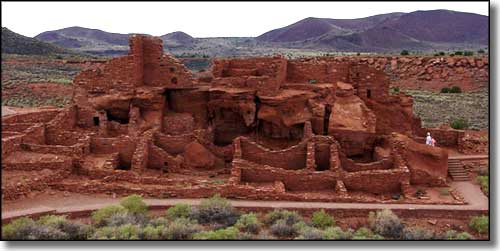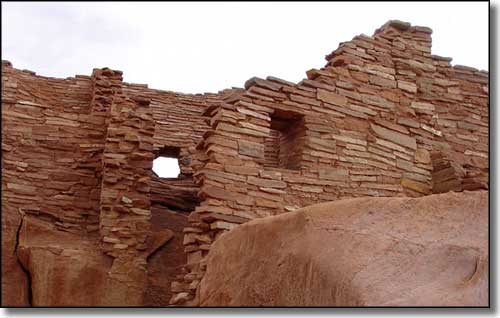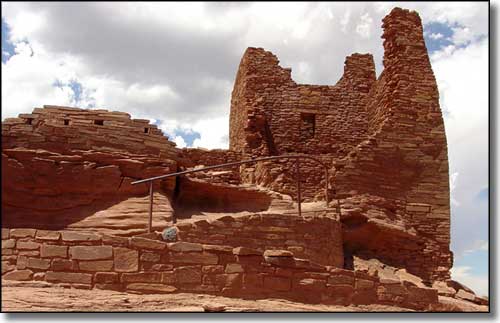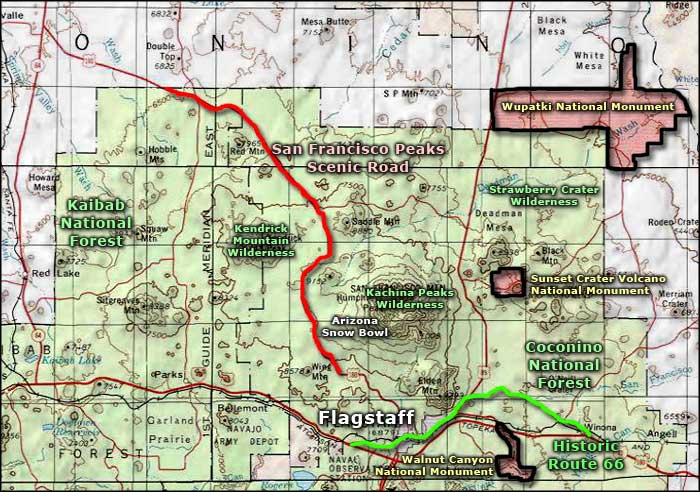
Wupatki National Monument

The ruins at Wupatki
Wupatki National Monument was first established in 1924 to preserve the Citadel and Wupatki Pueblos. Over the years since, the boundaries have been enlarged to include more pueblo ruins and other archeological resources. Today, the National Monument includes some 35,254 acres in the northern Arizona desert, directly west of the Navajo Nation and the Little Colorado River, and 18 miles north of Sunset Crater Volcano National Monument.
Wupatki seems to have reached its peak in the 1100's. In those days, the Colorado Plateau had a wetter climate and was slightly more hospitable to humans. Even then, though, the Sinagua, Kayenta and Cohonina Anasazi residents of the Wupatki area were collecting rainwater to supplement the yields of the few seeps and springs scattered around the arid landscape (today, drinking water comes up through 900' deep wells).
While there are indications that humans inhabited this area up to 10,000 years ago, Wupatki didn't come into existence until after the last eruptions at Sunset Crater, around 1000 CE. After the eruptions, this area was covered in cinders and ash, and those cinders and ash were better able to hold rainwater and sustain crops than most of the surrounding area. So the previous cultural practice of building small scattered homes gave way to the building of a few large central pueblos, each surrounded by pithouses and smaller pueblos. The structures were built of flat red sandstones held together with mortar, Wupatki being the tallest and largest structure. There is also a ruin in the area that is identified as a ball court similar to those found in Hohokam ruins in southern Arizona and in other ruins found further south in Meso-America. This particular ball court is the northernmost ball court yet found. Wupatki may have held up to 100 residents but several thousand people lived within a day's walk. This population density created a trade and cultural center here, and Wupatki flourished until about 1250 CE, when the climate changed for the drier and the folks moved on.
The Navajo name for Wupatki is "Anaasazi Bikin" (Houses of the Ancient Enemies).

Sandstone boulders were built right into Wupatki

The ruins at Wukoki

Another view of Wukoki

On the way to the Citadel Ruins

Looking out from the Citadel Ruins, San Francisco volcanic field in the distance

Wupatki National Monument area map
